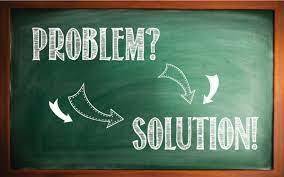“Take a risk in your life” If you win, you can lead; If you lose, you can guide – Swami Vivekanand
Introduction
Life is full of its ups and downs. One day, you may feel like you have it all figured out. Then, at a moment’s notice, you’ve been thrown a curveball. You’re not alone in these feelings. Everyone has to face their own set of challenges. Learning how to overcome challenges will help you stay centered and remain calm under pressure.
Objective
To do FMEA efficiently and effectively requires time from the best resources – those that have the most experience in various functions, are highly observant and are eager to build quality into the part.
When organizations and customers only pay lip service to FMEA, they don’t get the intended benefits. Everyone wants dependable, high-quality and safe products, but few think about the impact of not taking the time to do FMEA effectively.
Detailed Information
Companies will always pay for the quality of their products, it is simply much more expensive when done reactively.
Organizations and customers should change their behaviour to plan for quality rather than embracing detection and fire-fighting that leads to very high cost of quality, customer satisfaction issues, margin erosion and brand risk.
| S.No | Industry Challenges | Possible reasons | Possible Solutions |
| 1 | No target date for implementation of the new version
|
As per page 22 Clause 1.3.5, no clear guidelines for the cutoff date for implementing the new version
|
Organization can decide their own target date? |
| OEM or tier 1 can prepare a timeline for transition | |||
| 2 | No clear guidelines from IATF subscribing OEM and other OEM
|
Although released in June 2019, no OEM had officially demanded its implementation till recently
Many OEMs rejected the FMEA of tier 1 when it was prepared in the latest version! |
Some of the OEM’s have started sharing the target date like Renault, Stellantis, Ford |
| AIAG and VDA can demand all the IATF subscribing OEM to update their CSR | |||
| Indian OEM like Maruti Suzuki, TVS Motors etc. | |||
| 3 | Not easy to understand and implement | Approximately 100 additional pages have been added to the new version, making it difficult for the user to read and understand.
No clarity about the interlinkage between Failure mode and its effect and causes? Criteria for giving a rating to Severity, occurrence and detection is the targeted value! |
Change is the only constant thing in life |
| When FMEA came for the first time, it was equally difficult to accept, understand and implement | |||
| A good trainer can help to understand FMEA effectively | |||
| Self-learning in teams is the easiest way to learn, teach and implement | |||
| 4 | Not a focus area for Top management
|
No FMEA review for any design change, corrective action, Things Gone Wrong!
No linkage of FMEA effectiveness with the decrease in COPQ (Cost of Poor Quality)? FMEA output as an input for MRM not done like potential field failure, pending actions etc. Management does not hold people accountable for solid FMEA work |
By linking Cost of quality (Appraiser Cost, Prevention cost) and Cost of Poor Quality (Internal failure, External Failure) with FMEA |
| Link reduction in vehicle recall and Warranty | |||
| Link improvement in the organizations’ bottom line | |||
| Link proactive focus on the wastages (target cost of the product)
|
|||
| 5 | No clarity about tangible benefits for implementing a new version
|
How often customer gives importance to the review of the FMEA?
No inputs like a lesson learned, customer warranty policy, cyber security, safety etc. are considered before preparing the FMEA?
DFMEA and PFMEA are fancy tables to impress the customers and auditors? |
Supports five phases of the APQP to improve customer satisfaction by emphasizing defect prevention
|
| When correctly implemented, it can impact the organization both in the terms of performance, robustness, effectiveness, efficiency and bottom line | |||
| Supports customer audit, supplier PPAP | |||
| Enhancing customer satisfaction | |||
| 6 | Competency of the users
|
No formal training in the majority of the organization
The understanding about the previous version was also low No use of the Block diagram, Parameter diagram, Process Flow Chart! |
Focus on training, plan different workshops for understanding actual implementation |
| The incentive for implementing new FMEA |
References:
IATF 16949: 2016
FMEA Handbook (AIAG-VDA 1st Edition June 2019)
Industry Experts
This is the 132nd article of this Quality Management series. Every weekend, you will find useful information that will make your Management System journey Productive. Please share it with your colleagues too.
In the words of Albert Einstein, “The important thing is never to stop questioning.” I invite you to ask anything about the above subject. Questions and answers are the lifeblood of learning, and we are all learning. I will answer all questions to the best of my ability and promise to keep personal information confidential.
Your genuine feedback and response are extremely valuable. Please suggest topics for the coming weeks.

Leave a Reply
You must be logged in to post a comment.